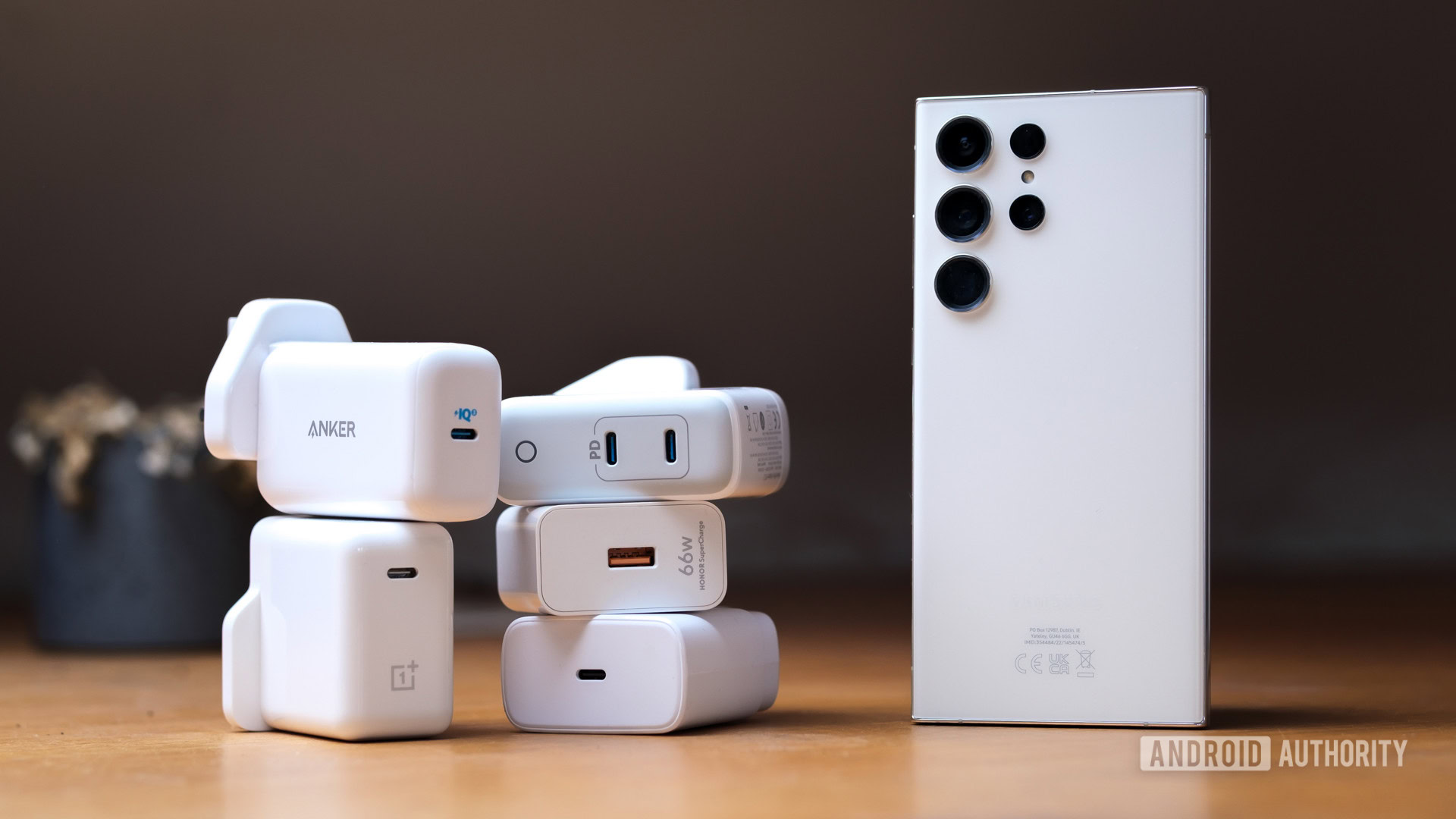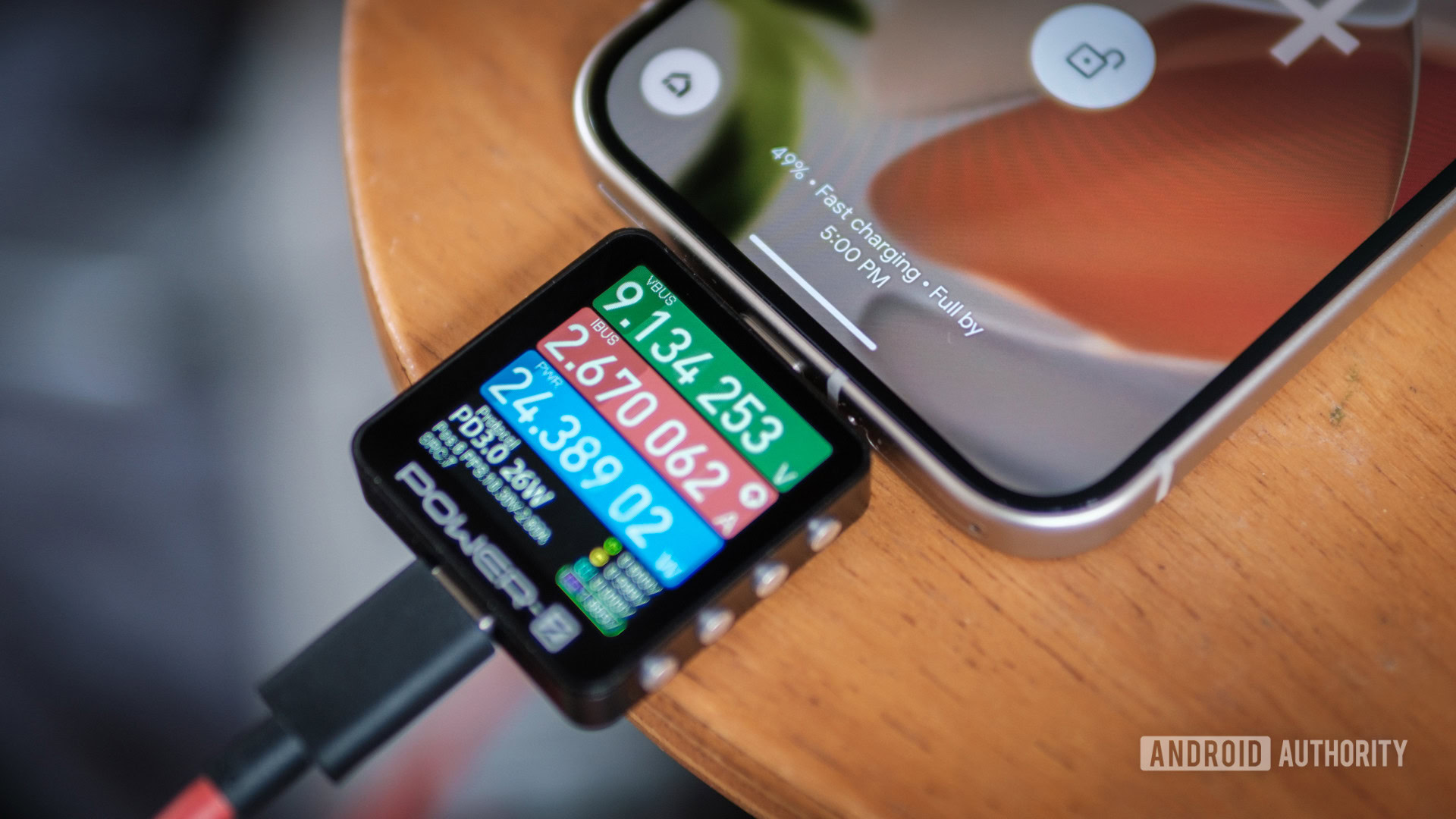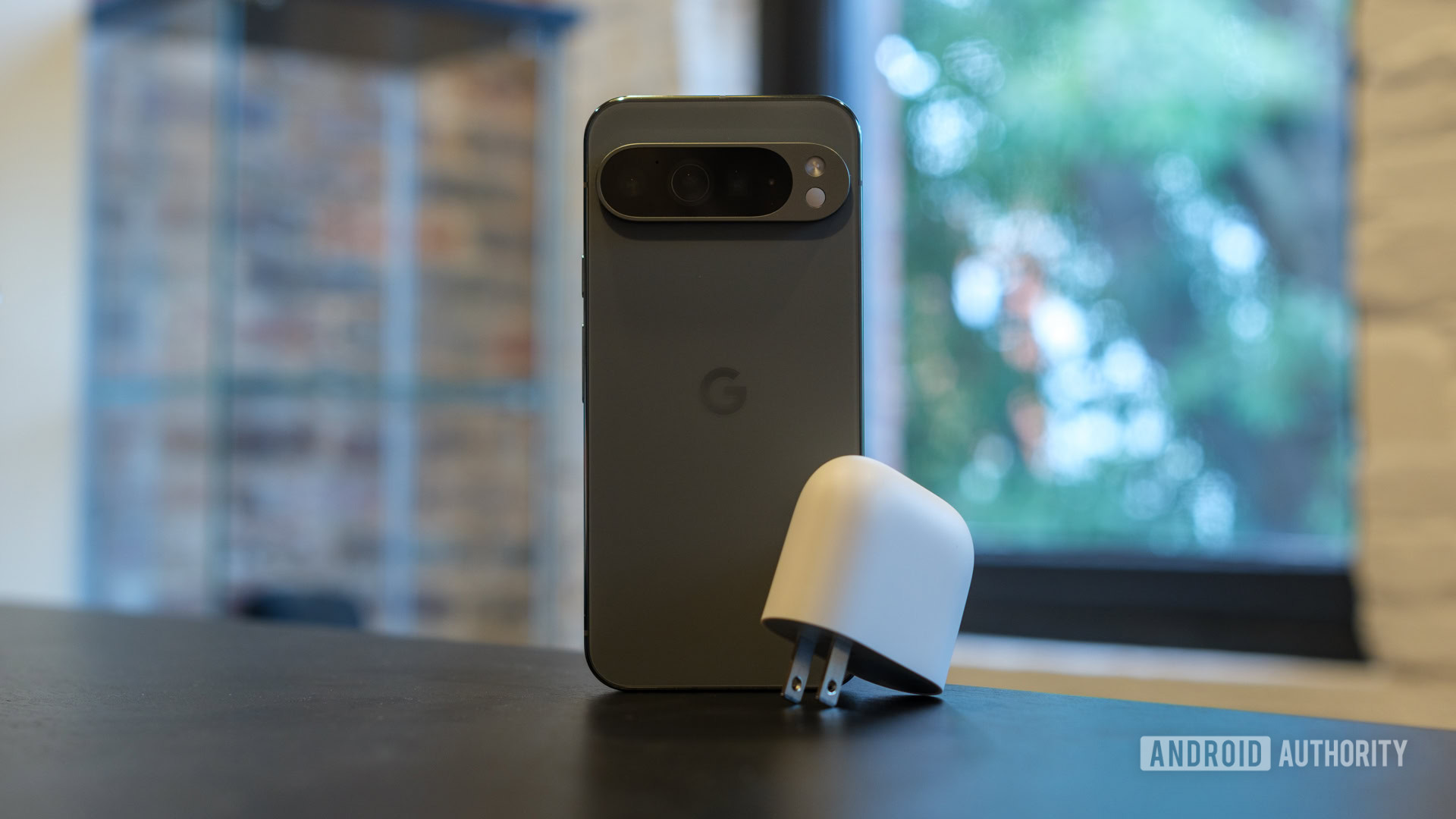Affiliate links on Android Authority may earn us a commission. Learn more.
Can chargers really damage your smartphone?
September 26, 2024

Picking the right phone charger for your new purchase is already frankly a pain, but reports of rogue chargers peeling paint off the new Samsung Galaxy Z Fold 6 just added a whole new level of stress to sidestepping the bad for the best charging products. But can a charger really damage your phone? Let’s dive through the facts and fiction to find out.
- Incorrectly grounded chargers are dangerous but are thankfully rare.
- High power levels aren’t a problem when done right.
- Stick to the big brand names or official charging accessories.
Does Samsung’s claim make sense?
This isn’t the first time charging has caused problems in the world of smartphones. You might remember when Google engineer Benson Leung found that several USB-C cables from Amazon broke spec and were potentially dangerous to use for high-power charging. However, in the case of the Galaxy Z Fold 6, Samsung states that “improperly grounded third-party chargers” could be the cause. Pointing the blame directly at the charger is a bit more unusual and, arguably, a bit more worrying.
So, does Samsung’s argument make any sense? Well, it’s certainly possible to incorrectly ground a USB-C connection, either by failing to connect all the necessary ground pins or by not connecting the cable shield to the chassis shield. Incorrect or partial grounding could cause the charging current to flow through another ground path, such as the phone’s chassis. Only Samsung would know whether this would induce sufficient current to peel off its choice of paint. Equally, though, the same problem could be caused by poor grounding on the handset side.
Of course, an incorrectly grounded charger is also unsafe in the event of a short circuit. An internal fault, particularly when charging at high power levels, could result in electric shock, damage to the receiving product, and potentially even an electrical fire. If there are faulty chargers like this on the market, it’s much more alarming than just peeling paint from Samsung’s expensive foldables. Thankfully, such manufacturing issues seem to be rare; we haven’t seen any cause for concern from the big-name products that we regularly test.
Can overcharging damage your phone?

More commonly cited risks with modern smartphones are overcharging, using a non-compliant charger, or one that provides too much power, but these concerns are mostly unfounded. In theory, if a charger provided more voltage than your phone’s battery or circuitry could handle, this would cause high temperatures, reduce battery longevity, and potentially cause serious problems. In reality, however, smartphones have several safety features to ensure this doesn’t happen. However, safety features can occasionally fail.
First, fast charging technologies, such as USB Power Delivery used by Apple, Google, and Samsung, require an ongoing successful digital handshake between the charger and device to negotiate a supported power level. Failure to agree on a supported protocol and power level will result in default slow charging, removing the risk of overvoltage. Secondly, modern devices that use high-power charging constantly monitor their internal battery state, checking that the voltage and temperature remain in the safe operating zone. At the first sign of trouble, these devices negotiate a lower power level, giving the handset time to cool off.
Modern fast charging phones are packed full of safety features.
Smartphone USB-C ports also optionally feature electrostatic discharge and overvoltage protection. This helps guard against potential short circuits and other sources of damage that could emanate from a plug. Most flagship phones and even mid-range models should offer some protection, but such features are seldom talked about.
Proprietary fast charging technologies may be more or less robust regarding handshakes, overvoltage protection, and other safety features. Your mileage may vary here, especially when picking third-party chargers that claim to implement an already opaque proprietary charging standard. This isn’t to say that proprietary fast charging is unsafe; we just typically know a lot less about how they’re implemented than the universal USB standard.
How to buy a safe charger

Unfortunately, there’s no absolute guarantee that any specific charger will be 100% fault-free (production issues can happen, after all), but generally, sticking to the more prominent charging brands will provide a level of reassurance. Official smartphone accessories are always the safest bet, as brands precisely match and test charging protocols to their products. This will also give you the most robust case for complaints and compensation should you experience any issues.
Stick with the big brands, and it's hard to go wrong.
The third-party market is always a bit more risky but almost a necessity if you’re looking to charge multiple products at once. We’ve generally had positive experiences with big brands like Anker and UGREEN, as they do a good job supporting USB Power Delivery products. No one is infallible; Anker recently recalled power banks for a fire hazard, but a high profile means that issues like this are more promptly addressed.
It’s always a good idea to avoid the lowest-priced, bottom-of-the-barrel, white-label products, especially if they’re manufactured in countries with notoriously lackluster quality control. Not only do you run a higher risk of an off-spec product, but such companies are also less likely to initiate a recall or alert consumers to potential problems. You get what you pay for, as they say.